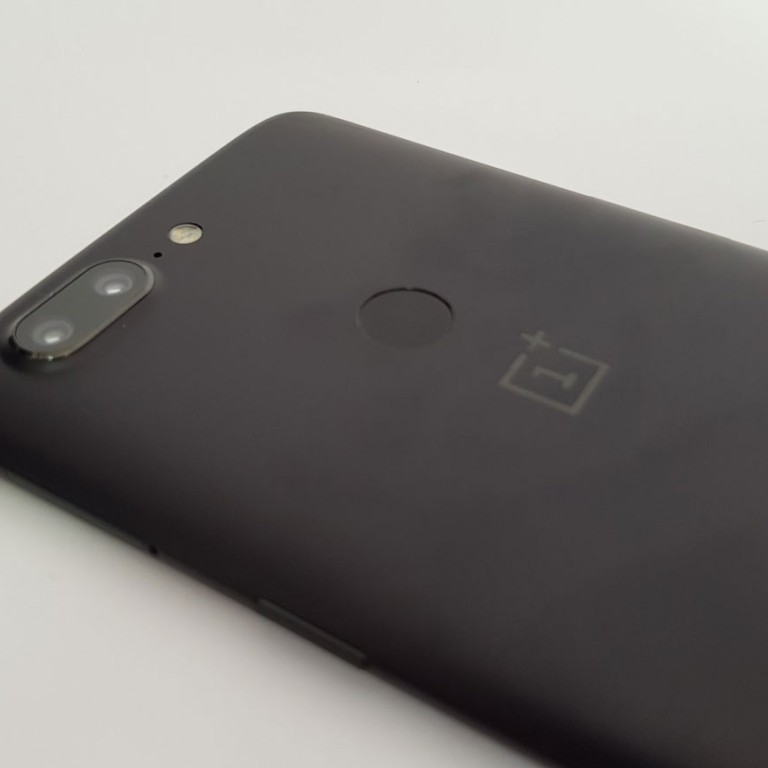
OnePlus 5T Review
I’ve always found it a bit tricky to review OnePlus phones. Their handsets tend to have the newest and most powerful CPUs available, so I always fall into the habit of stacking them up against flagship models from Samsung or Apple -- competition that they just can’t live up to.
But then I’ll remember that the Shenzhen-based company has always priced its handsets at half (or less) the cost of an iPhone or Galaxy. And once you factor that in, it becomes clear that OnePlus produces phones with the best value for money on the market. That’s been the case every year, and it’s the same story with their newest handset, the 5T.
Genuine upgrade
Usually when tech companies slap a random letter after an existing model’s name, it means an iterative upgrade with minimal improvements -- think the iPhone 6s versus the iPhone 6. But the 5T is a genuine step up from the 5, which is all the more surprising given that the latter was released just a few months earlier.

The 5T drastically trimmed the top and bottom bezels (aka forehead and chin) of the device, giving the 5T the same all-screen front as other current flagships. The capacitive buttons and home button that have been a staple of past OnePlus phones have also been scrapped here, in favor of a rear fingerprint reader -- still as fast as ever -- and digital on-screen buttons.
Otherwise, the rest of the phone’s hardware matches the 5, with an aluminum body, well-hidden antenna lines, slightly chamfered sides and a dual camera on the back that’s nearly identical in both physical look and capabilities to the iPhone 7 Plus.
Powering it all is a Snapdragon 835 processor -- the same chipset found in more expensive Samsung or LG phones -- and either 6GB or 8GB of RAM depending on the model. Most phones on the market right now have only 4GB of RAM. The cream of the crop have 6GB. OnePlus is going beyond that by giving consumers the option for 8GB.
Bloat-free Android software
All that memory is paired with a clean, bloat-free version of Android to make for a phone that is blazing fast -- arguably the fastest among Android phones -- with great battery life. Try using the OnePlus 5T for a few days and jump back to a phone with more built-in software like the Samsung Galaxy Note 8 and you’ll see the difference, especially when switching between multiple apps.
The other upside to OnePlus’ OxygenOS is that it’s quite customisable. You can, for example, assign specific tasks (like opening Facebook, or turning off the screen) to actions such as double-tapping the back button. You can even launch apps directly from a locked phone by drawing a letter on the display while it’s sleeping.

The best software feature, however, is the 5T’s use of facial recognition to unlock the phone. It uses the front camera to scan for facial identifiers (such as distance between eyes and the shape of your lips), and is stunningly fast -- it unlocks the phone almost immediately.
I should mention that OnePlus facial recognition system is only “2D,” meaning that in theory it’s nowhere near as secure as the iPhone X, which uses an infrared scanner to create a 3D map of the user’s face. But I will say that I have been unable to trick the 5T despite dozens of attempts using life-sized photos of my face or relatives with similar facial features.
Great value for money
If there’s one downfall to the 5T that keeps it from being the best of the best, it’s the camera, which is merely good but not great. The dual-lens camera is easy to use and is quick to focus, but photos in low light situations lack punch compared to the same shots captured by the iPhone X or Huawei Mate 10 Pro. In broad daylight you’ll be pleased with the 5T’s images -- they appear vibrant and well-detailed.
But again, I’m falling into my old habit of comparing the US$500 OnePlus 5T to a US$1,000 iPhone X. If you compare the 5T’s camera to other phones at its price range, it wins by a landslide.
The way I see it, only power users who absolutely crave the best of the best should go for a premium phone like the iPhone X or Huawei Mate 10 Pro over the OnePlus 5T. For most people, it doesn’t make sense to get a phone that’s only slightly better for double the price.
For more insights into China tech, sign up for our tech newsletters, subscribe to our Inside China Tech podcast, and download the comprehensive 2019 China Internet Report. Also roam China Tech City, an award-winning interactive digital map at our sister site Abacus.

